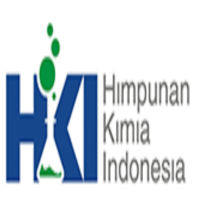ANALISIS E-LEARNING READINESS PADA PEMBELAJARAN KIMIA DI SMA NEGERI KOTA BANDA ACEH
Abstract
The Covid-19 pandemic has changed our activities, including activities in the learning process. Previously, the learning process was carried out directly in the classroom, but the pandemic has changed into online learning such as e-learning. The implementation of e-learning in schools should be followed by an analysis of the level of e-learning readiness (ELR). This study aims to determine the readiness level of State Senior High Schools (SMA Negeri) Banda Aceh, namely SMA Negeri 1, SMA Negeri 3 and SMA Negeri 4. The method used in this study was descriptive qualitative with the number of research subjects as many as 94 students and 2 teachers in each school. The instrument used in this study was a questionnaire compiled and validated based on the Aydin & Tasci ELR model. The results showed that the three schools obtained ELR scores respectively, SMA Negeri 1 () = 3.53, SMA Negeri 3 () = 3.54. The score showed that these schools are ready but need a few improvements in applying e-learning at school. Aspects that must be improved are humans, technology, innovation, and development.
Keywords
Full Text:
PDFReferences
Anugrah, D. C., Rumanti, A. A., & Rizana, A. F. (2020). Pengukuran Tingkat Kesiapan Penerapan E -Learning Pada Proses Belajar Mengajar Program Studi S1 Teknik Industri Universitas Telkom Bandung. e-Proceeding of Engineering. 7, pp. 5554-5562. Bandung: Telkom University.
Arifin, Z. (2014). Penelitian Pendidikan Metode dan Paradigma Baru. Bandung: Remaja Rosdakarya .
Aydin, C., & Tasci, D. (2005). Measuring readiness for e-learning: Reflections from an emerging country. Educational Technology and Society, 8(4), 244-257.
Bayu, S., & Jumadi, J. (2018). Developing physics subject-spesific pedagogy on problem based learning model assisted by e-learning to enhance student’s scientific literacy skill. International Journal of Sciences: Basic and Applied Research (IJSBAR), 37(3).
Dinata, P. A., Suparwoto, S., & Sari, D. (2020). Problem-based online learning assissted by whatsapp to facilitate the scientific learning of 2013 Curriculum. Berkala Ilmiah Pendidikan Fisika, 8(1).
Djamen, A. C., Lumapow, H. R., Lengkong, J. S., Rotty, V. N., Tuerah, I. J., & Batmetan, J. R. (2021). Metode Aylin dan Tasci dalam Pengukuran Implementasi E-Learning Readiness. iSmartEdu: Jurnal Pendidikan Teknologi Informasi, 2(2), 1-15.
Faslah, R., & Santoso, H. B. (2017). Analisis Kesiapan Implementasi E-Learning Menggunakan E-Learning Readiness Model. Jurnal Positif, 3(2), 113-120.
Firmansyah, E., Helmiawan, M. A., Rahman, A., Supendi, P., Ningsih, S. H., Suhayati, M., & Rahman, A. A. (2021). Examining Readiness of E-Learning Implementation Using Aydin DQG Tasci Model: A Rural University Case Study in Indonesia. 2331, pp. 1-8. AIP Conference Proceedings. doi:https://doi.org/10.1063/5.0041715
Honga, J., Moinasb, S., & Pouget, S. (2021). Learning in speculative bubbles: Theory and experiment. Journal of Economic Behavior & Organization, 185, 1–26. doi:https://doi.org/https://doi.org/10.1016/j.jebo.2021.01.009
Junior, R., & Blazevski, J. (2014). Assessing the role of online technologies in project-based learning. Interdisciplinary Journal of Problem-Based Learning, 8(1).
Kristiningsih. (2020). Kesiapan Guru Sekolah Avicenna Jagakarsa Dalam Melaksanakan E- Learning Di Masa Pandemi Covid-19. SAP (Susunan Artikel Pendidikan), 5(2), 189-195.
Marpaung, M. A., Syahril, Ambiyar, & Ahyanuardi. (2021). Mengukur Kesiapan Implementasi E-Learning menggunakan Model E-Learning Readiness. Edukatif : Jurnal Ilmu Pendidikan, 3(5), 2247 - 2257.
Puspita, K., Nazar, M., Hanum, L., & Reza, M. (2021). Pengembangan E-modul Praktikum Kimia Dasar Menggunakan Aplikasi Canva Design. Jurnal Ipa & Pembelajaran Ipa, 5(2), 151-161.
Ramadan, R., Pradnyana, I. A., & Suyasa, P. A. (2019). Pengukuran Tingkat Kesiapan Implementasi E-Learning (E-Learning Readiness) Di SMA N 2 Singaraja Menggunakan Model Chapnick. Jurnal Pendidikan Teknologi dan Kejuruan, 16(2), 258-266. doi:DOI: https://doi.org/10.23887/jptk-undiksha.v16i2.18683
Reza, M., Hamama, R., Maulida, S., Nurdin, N., Mayasri, A., & Rizkia, N. (2021). Persepsi Mahasiswa terhadap Pembelajaran Daring Berbasis Video dengan Bantuan Pen Tablet Selama Pandemi Covid-19. Orbital: Jurnal Pendidikan Kimia, 5(2), 124-136.
Schreurs, J., & Al-Huneidi, A. (2012). E-Learning Readiness in Organizations: Case KBC Bank. International Journal of Advanced Corporate Learning (iJAC), 5(1), 1-5.
Setiaji, B., & Dinata, P. C. (2020). Analisis kesiapan mahasiswa jurusan pendidikan fisika menggunakan e-learning dalam situasi pandemi Covid-19. Jurnal Inovasi Pendidikan IPA, 6(1), 59-70.
DOI: http://dx.doi.org/10.22373/lj.v10i1.14098
Refbacks
- There are currently no refbacks.
Copyright (c) 2022 Muammar Yulian, Chusnur Rahmi, Ade Rida Wahyuni

This work is licensed under a Creative Commons Attribution 4.0 International License.
INDEXED IN

